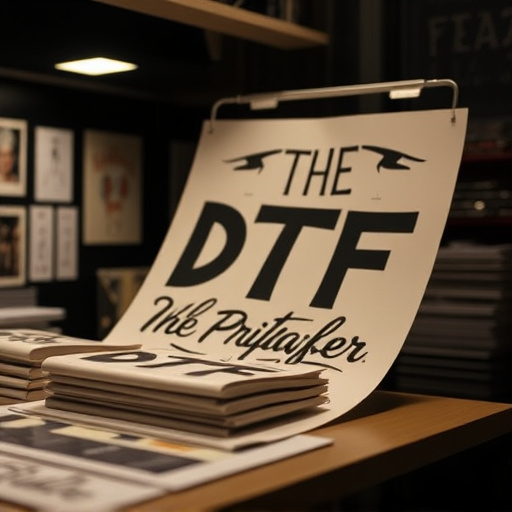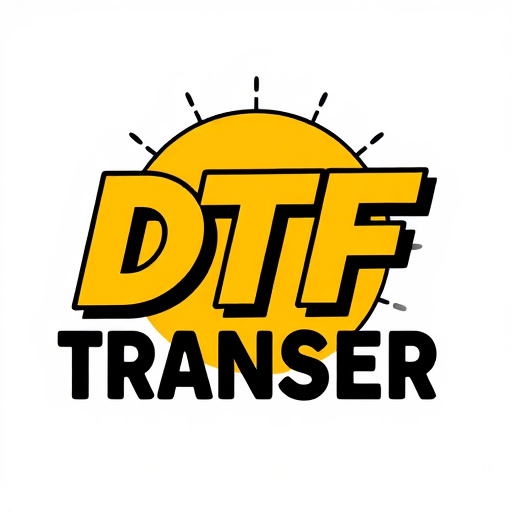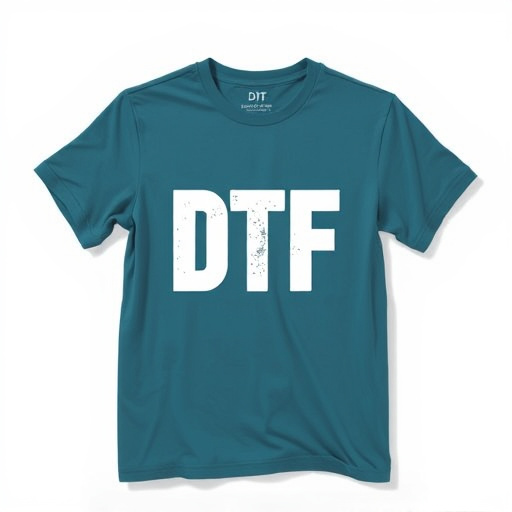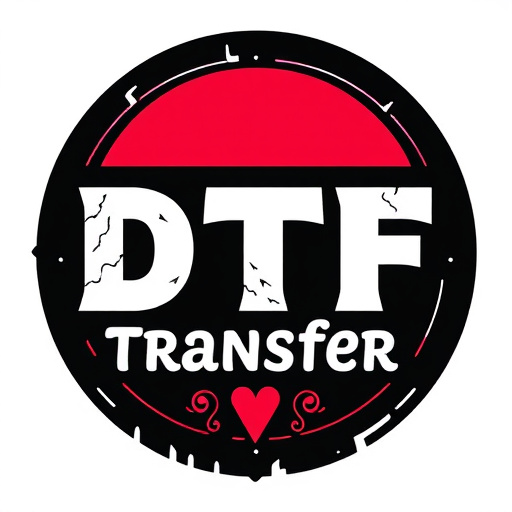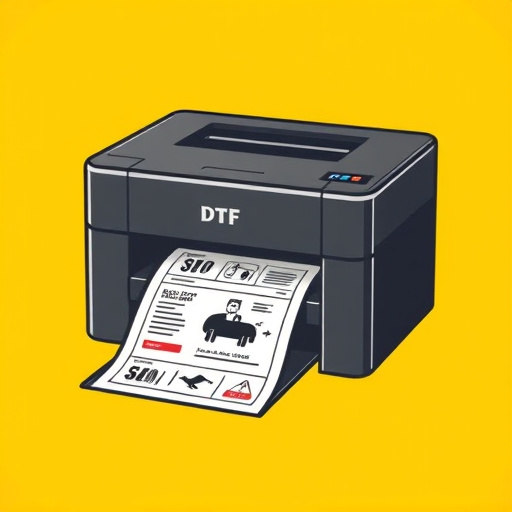Direct-to-film (DTF) printing is a revolutionary technology enhancing textile design and production. It enables high-quality custom prints on various materials through a specialized film carrier that resists fading and cracking. The process involves meticulous preparation: digitizing artwork, color palette testing, and precise layout scaling for optimal results. Essential equipment includes a DTF printer, eco-friendly ink, and diverse films tailored to different substrates. Designs are carefully tailored to the film media, cured with UV/LED lights, then transferred to surfaces for vibrant, durable prints. DTF's advantages include intricate patterns, durability, faster production, and cost-effectiveness, impacting industries from textiles to signage, fostering creative product development.
Discover the art of DTF Transfer—a revolutionary process transforming the way we print designs onto special films for transfers. This article guides you through the entire DTF Printing journey, from Understanding DTF Transfer and Preparing Your Design to the Equipment and Materials Required. Learn the precise Step-by-Step DTF Printing Process, explore Curing and Setting Techniques, and uncover the vast Applications and Benefits of DTF Prints. Master this technique and unlock endless creative possibilities.
- Understanding DTF Transfer: A Brief Overview
- Preparing Your Design for DTF Printing
- The Equipment and Materials Required
- The Step-by-Step DTF Printing Process
- Curing and Setting the Film Transfer
- Applications and Benefits of DTF Prints
Understanding DTF Transfer: A Brief Overview

The Direct to Film (DTF) transfer process is a cutting-edge technology revolutionizing the way we print and apply designs on various materials, particularly in the textile industry. DTF involves printing directly onto a special film, which then serves as a durable carrier for the design. This innovative method offers numerous advantages over traditional printing techniques, such as direct to garment (DTG) or heat transfer. With DTF, prints are more vibrant and long-lasting, capable of withstanding washing and wear without fading or cracking.
This technology is especially valuable for creating high-quality custom designs on textiles like t-shirts, hats, and bags. The process begins with a designer creating or selecting an image to be printed. This design is then digitally transferred onto the special DTF film using advanced printing equipment. Once prepared, the film is precisely aligned over the target material, and heat is applied to fuse the print onto the fabric or other surfaces, ensuring a precise and long-lasting application. DTF Printing has gained immense popularity among businesses and hobbyists alike due to its speed, efficiency, and superior print quality.
Preparing Your Design for DTF Printing

Preparing your design for DTF (Direct to Film) printing is a meticulous process that ensures optimal results. It starts with digitizing your artwork, ensuring it meets the necessary specifications for DTF transfers. This includes high resolution (300 DPI or higher) and proper color mode settings, typically CMYK for print accuracy. Using graphic design software, you can create or edit your image, incorporating any text, graphics, or illustrations intended for the final product.
Next, consider the layout and scaling of your design. Since DTF prints are applied to a film, precise sizing is crucial. Ensure your design fits within the desired area on the film without overspilling or cropping. Additionally, test your color palette to guarantee vibrant and accurate reproduction when transferred onto various materials. This preparation phase is vital to creating captivating DTF transfers and enhancing the overall printing experience.
The Equipment and Materials Required

To embark on the process of creating DTF (Direct to Film) transfers, several key equipment and materials are essential. This includes a DTF printer, which is specialized for precise and high-quality printing onto film. The printer utilizes advanced technology to ensure accurate color replication and fine detail reproduction, making it ideal for producing intricate DTF prints.
Additionally, you’ll need a variety of films tailored for DTF transfer applications. These films vary in terms of thickness, durability, and adhesion properties, each designed for specific substrates like t-shirts, mugs, or other materials. Other necessary supplies comprise ink suitable for DTF printing, typically eco-friendly and solvent-based options, along with cleaning solutions to maintain printhead hygiene.
The Step-by-Step DTF Printing Process

The process of Direct to Film (DTF) printing for transfers involves several precise steps to ensure high-quality results. It begins with preparing the design file, ensuring it meets the specific requirements for DTF transfer. This includes appropriate resolution, color mode, and formatting, usually in vector or raster formats. The design is then optimized for the film media, considering factors like size, complexity, and number of colors.
Next, the printed film is cut precisely to match the design, often using specialized cutting equipment. This ensures clean lines and accurate outlines. Following this, the film is fed into the DTF printer, which uses ultra-high precision technology to directly print the design onto the film. The printer applies ink through a stencil, creating a negative image of the design on the film. After printing, the film goes through a curing process to set the ink, making it ready for transfer to various surfaces like fabric or wood.
Curing and Setting the Film Transfer

After printing your design onto special film for transfers, the next crucial step is curing and setting the DTF transfer. This process involves exposing the film to specific light conditions, typically UV or LED lights, which initiate a chemical reaction that hardens the ink and permanently fixes the design onto the substrate. The duration and intensity of exposure must be precisely controlled to ensure optimal results; too little light could leave the design underdeveloped, while too much might cause unwanted fading or burning.
Curing not only sets the design but also ensures the transfer adheres firmly to various materials, from fabrics to wood and metal. Once cured, the film can be carefully peeled away, revealing your design ready for application onto the desired surface. This meticulous step is what transforms DTF printing into a versatile and popular method for creating custom designs with vibrant, long-lasting prints on a wide range of products.
Applications and Benefits of DTF Prints
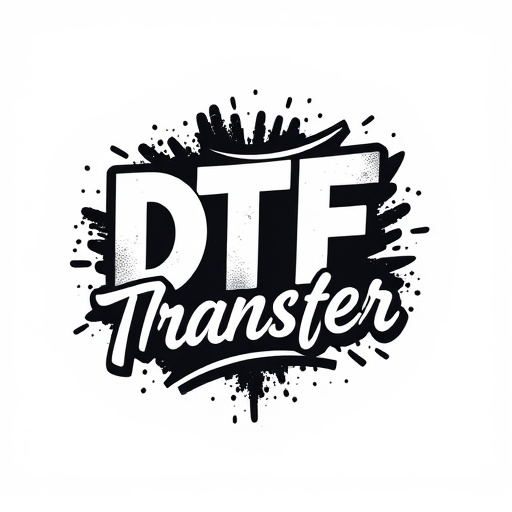
Direct-to-film (DTF) prints have revolutionized the way we approach design transfer, offering a multitude of applications across various industries. From fashion and textiles to signage and promotional items, DTF transfers provide a high-quality, cost-effective solution for applying intricate designs directly onto a wide range of materials. The versatility of DTF printing allows for the creation of custom patterns, logos, and graphics with exceptional detail and vibrancy.
One of the key benefits of DTF prints is their durability. These transfers are designed to withstand rigorous handling and exposure to elements, making them ideal for outdoor signage, clothing, and accessories. Moreover, DTF technology streamlines the production process by eliminating the need for costly screens or plates, resulting in faster turnaround times and increased efficiency for businesses. This innovative printing method has undoubtedly left its mark on modern design and manufacturing, fostering creativity and enabling producers to bring unique, visually appealing products to market.









